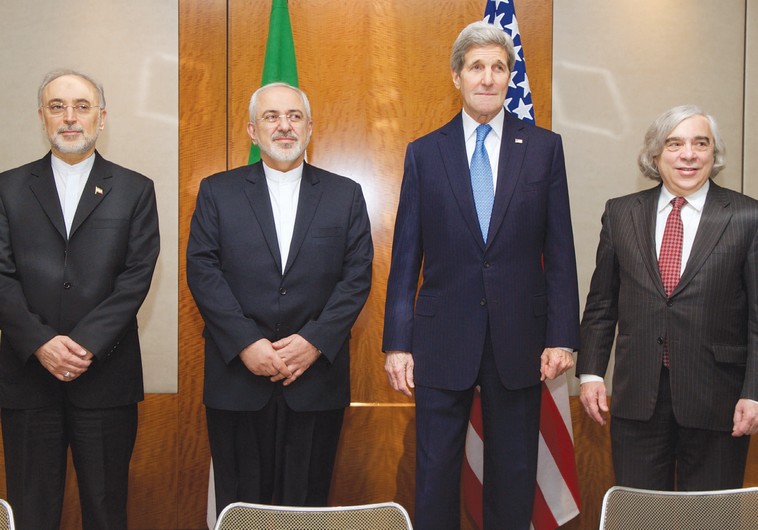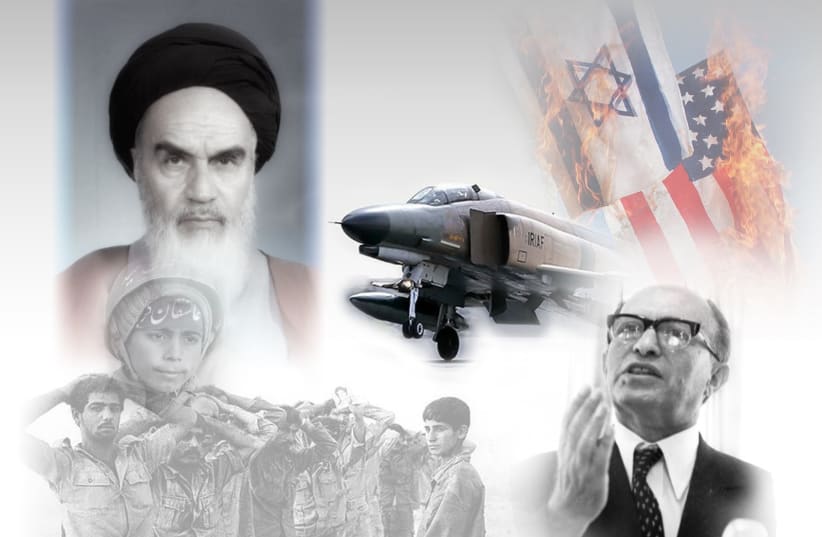A diplomatic shift: Iran and the U.S. swapping offices?
Friday, 22 May 2015
Majid Rafizadeh/Al Arabiya
As the chances of a nuclear deal between the six world powers (known as P5+1: the United States, United Kingdom, Germany, France, Russia, and China) and the Islamic Republic become higher, the potential normalization of the relationship between the two long-standing enemies- the U.S. and Iran- has attracted international spotlight.
Recently, the Iranian and American leaders have agreed on opening new diplomatic offices in Tehran and Washington in order to preserve the national interests of both countries.
Opening diplomatic offices can be viewed as a significant move, and can be a crucial pillar for advancement of Iran’s foreign policy in the region.
After the hostage crisis in 1979, high American officials and diplomats have not set foot on Iranian soil. Washington and Tehran broke diplomatic ties in 1979. As a result, opening new diplomatic offices in Tehran and Washington, after 36 years of tension, is absolutely a crucial reflection of the thawing of ties between the U.S. and Iran.
The hardliners and the office of the supreme leader will likely view a rapprochement with the U.S. as a risk for their hold on power
However, these developments beg the questions as to whether a final nuclear deal can lead to the full normalization of ties and complete cooperation between the U.S. and the Islamic Republic. If so, on what geopolitical, strategic, or economic levels might the two countries might go hand in hand with each other?
The historic diplomatic moves
Several historic moves have been conducted which might suggest a reversal in the animosity between the Iranian and American governments.
U.S. Secretary of State John Kerry set foot on Iranian property, or rather a residence. He met with Iran’s Foreign Minister, Mohammad Javad Zarif, at the residence of the Iranian ambassador to the United Nations, Gholamali Khoshroo, in New York.
Although it was once considered a taboo, currently Iranian and American leaders meet frequently at the highest levels, sitting on the same table and negotiating, with some of their interactions publicly televised. Breaking another taboo, the American President Barack Obama, spoke on the phone with his Iranian counterpart, President Hassan Rowhani. In addition, U.S. and Iranian flags are repeatedly shown next to each other in these high level meetings.
Although these moves might appear to be a notion of symbolism, they are crucial in diplomatic arenas for restoring ties.
The underlying reason behind the possible normalization between Washington and Tehran and the current diplomatic encounters between the two government officials is indeed Iran’s nuclear file.
Iran’s nuclear defiance, which was once a significant factor behind Iran-U.S. tensions, has led to a shift in which the nuclear file has become a source for the further normalization of ties and cooperation between the U.S. and Iran.
Potential hurdles can be overcome
The crucial barriers in rapprochement between U.S. and the Islamic Republic originated mainly from the principalists, hardliners in Tehran, the Islamic Revolutionary Guard Corps (IRGC) and the office of the Supreme Leader Ayatollah Ali Khamenei.
Although, there is some domestic resistance (from the public or Senate) in the U.S. when it comes to the improvement of ties between Tehran and Washington, these platforms do not possess executive power over the president’s decision to open an embassy in Iran or further ratchet up diplomatic headway with the Iranian leaders.
Although the American public might still remember the hostage-taking of American diplomats in 1979 in Tehran, the U.S. president can also persuade the public that an improvement of ties is in the national, geopolitical and economic interest of the United States.
On the other hand, since Iran’s political establishments and policies are driven not solely by national and geopolitical interests, but also ideological principles, the hardliners and the office of the supreme leader will likely view a rapprochement with the U.S. as a risk for their hold on power.
Restoring full diplomatic ties can also be analyzed as betraying the revolutionary principles of the Islamic Republic which were founded based on anti-Americanism, its interference in the region, as well as opposition to Western models of socio-political and socio-economic landscapes.
From the perspective of Khamenei – who has the final say in foreign policy decisions – diplomatic ties with the U.S. might also lead to the empowerment of Iranian civil society and secular factions. From the prism of the senior cadre of the IRGC, relationships with the capitalist American government might lead to the opening of Iranian markets which will endanger the economic monopoly of IRGC institutions.
Notwithstanding these issues, these boundaries and hurdles can be resolved. A political faction which can address the concerns of the supreme leader and IRGC leaders, is Rowhani’s camp.
Although Rowhani and his technocrat team share commonalities with the hardliners that they attempt to preserve the interests of the Islamic Republic, they differ in that they put national and geopolitical interests ahead of ideological ones. They are more diplomats and statesmen than ideologues.
In closing, similar to the ongoing nuclear negotiations, Rowhani and the moderate camp can persuade Ayatollah Khamenei that diplomatic ties with the U.S. will, in fact, empower the Islamic Republic, further its hegemonic ambitions, and raise Tehran’s economic status without the need for the Iranian leaders to give up that much of their revolutionary principles.
In other words, the Islamic Republic can cooperate with the U.S. on strategic, geopolitical and national levels covertly or overtly while maintaining the foundations and revolutionary principles of the Islamic Republic as well as advancing its ambitions.




















